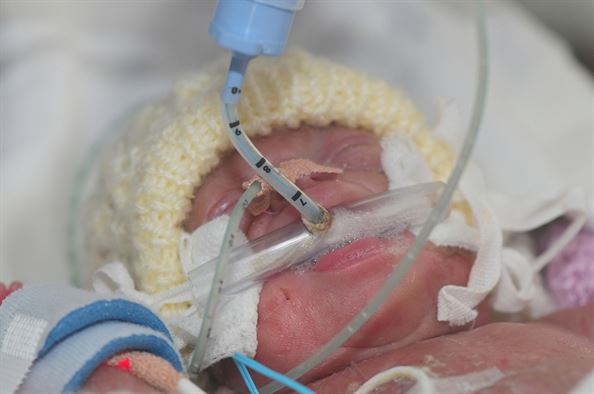There is an intense debate raging within Neonatal medicine in the United States and elsewhere about whether or not very premature babies (22-26 weeks gestation) are full members of the human family. The claim that they are not, clears the path to allowing these babies to die rather than save them. This is the extension of abortion logic (‘they aren’t human’) to babies delivered at the point of viability.
A central plank in the argument of those who urge a reconsideration of treating these late-second trimester babies as full human persons is that neonatologists are not actually ‘saving a human life’ but are rather ‘creating a disabled life.’
Dr Jeremey Garrett of Children’s Mercy Hospital in Kansas City, a supporter of the full personhood of preterm babies, has characterised the arguments he runs up against in the following way;
“Personhood is a creative process that gradually unfolds over the course of a normal term pregnancy. On this account, preemies at the borderline of viability (i.e. 24 weeks or earlier) are partially created persons. As a result, their moral status is neither that of a fully created human person nor that of inanimate matter. Hence, the relevant moral question in regard to these hybrids is not whether a person should be saved, but instead whether neonatologists have a right or an obligation to direct the remaining process of creating a person.”
Garrett, along with his colleagues, Brian S. Cater and John D. Lantos, have been vocal in their opposition to this view. In particular they have opposed the view put forward by Travis N. Rieder, of John’s Hopkins University who questions the “moral pressure” to resuscitate preterm babies. Rieder criticises the idea that resuscitation in this context “saves” a human life and argues instead that “our radical medical advancements have allowed us to intervene in the life of a human before it makes sense to say that such an intervention ‘saves’ someone; rather, what the physician does in resuscitating and treating an extremely preterm infant is to take over creating it.”
This area of debate within neonatology is most commonly described as the ‘Creating v Saving’ controversy.
It is of fundamental importance to those of us concerned with the practice of ethical, person-centred medicine.
It is also important because it illuminates the kind of reasoning through which the value of human life is undermined at every stage along the continuum of early human development.
This is especially the case by its continual insistence on assigning that value to some arbitrary point past the initial fusion of egg and sperm.
I would contend therefore that there is direct logical trajectory from the view that embryos are not really human persons, to positing the view that babies born at the point of viability are not really human persons either.
Both views fundamentally rely on the belief that the absence of certain physical characteristics, stages of development, organs etc, are determinative for denying humanity (see Patsy McGarry of The Irish Times re embryos, “It may someday become a human being, but it is not a human being.”)
Let us recall from Garrett’s description above, that proponents of this view describe preterm babies as ‘partially created persons.’
This is almost identical to the language used by those who advocate everything along the spectrum from embryonic stem cell research, to abortion up to 24 weeks or even full term partial birth abortion.
Indeed it is perfectly congruous to point out that according to this logic it is more not less permissible to end the life of a preterm child since it does not display the ‘required’ physical characteristics that might otherwise ‘legally bind’ us to save it.
Bioethicists like Peter Singer, and who is radically pro-abortion, at least has the intellectual honesty to admit that this is the logical outcome of his arguments.
Let us end with an observation and a question from Dr Garrett:
“If ‘not-yet-fully-created persons’ lack the moral status to which an ethics of rescue applies, by Rieder’s logic, this could apply to term new-borns, infants, toddlers, or pre-schoolers, all of whom are in the process of becoming fully formed adult persons. If Rieder wants to limit his normative claim to only babies of some gestational age, he must explain why, and do so in the terms of his continuum of creation. At what stage of the creation process is one created enough to deserve rescue? And why?”
















